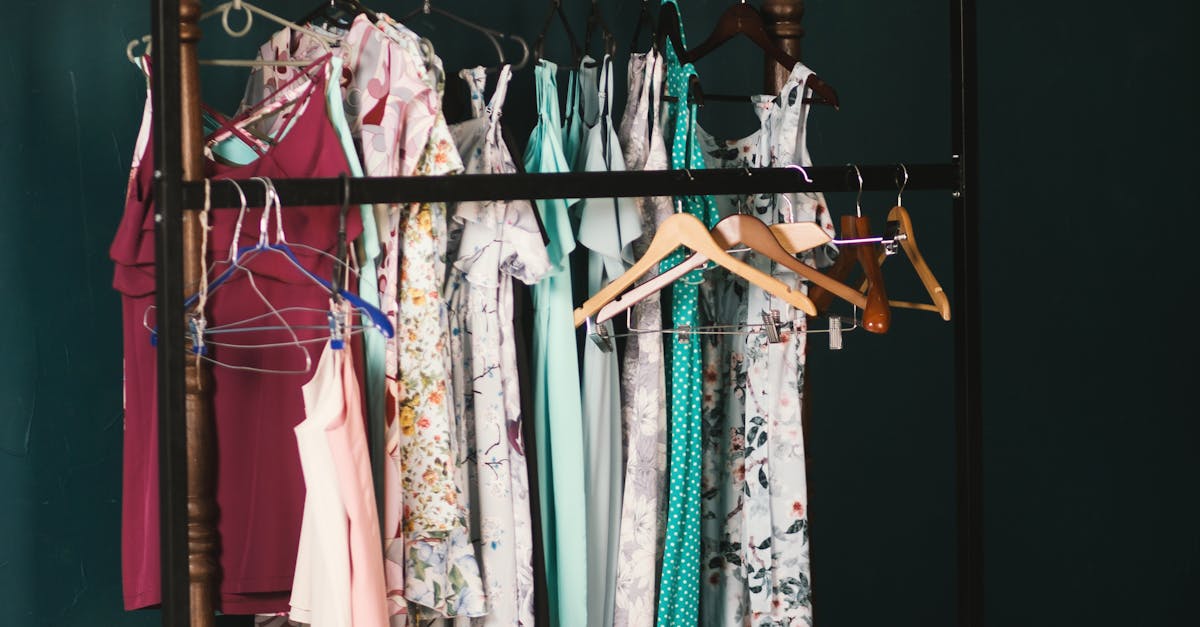
Table Of Contents
Benefits of Proper Ventilation
Proper ventilation in fitted wardrobes plays a crucial role in maintaining a healthy environment for your clothing and accessories. Adequate air circulation helps to prevent moisture buildup, which can lead to mold and mildew growth. When wardrobes are well-ventilated, the risk of odors accumulating within the confined space is significantly reduced. This ensures that clothes remain fresh and in optimal condition over time. In cities like Sydney, where humidity levels can fluctuate, ensuring that fitted wardrobes are ventilated is essential for preserving clothing quality.
Additionally, effective ventilation contributes to the overall lifespan of garments. Fabrics need to breathe, and without proper airflow, they can become damaged or discolored. Fitted wardrobes in Sydney that incorporate ventilation features make it easier for air to circulate, reducing the likelihood of fabric degradation. This attention to airflow can improve the user experience, offering peace of mind that clothing is stored properly. A well-ventilated wardrobe is not just a practical consideration; it reflects a commitment to quality and care for one’s belongings.
Enhancing Clothing Longevity and Freshness
Proper ventilation in fitted wardrobes is essential for maintaining the longevity and freshness of your clothing. Stagnant air can lead to the accumulation of moisture, which promotes mold and mildew growth. This not only affects the quality of the fabrics but can also create unpleasant odors that cling to garments. When investing in fitted wardrobes Sydney, considering the ventilation options will help protect your wardrobe, ensuring that clothes remain in optimal condition even with frequent use.
Incorporating ventilation features into your fitted wardrobe design allows for consistent air circulation. This helps in dissipating moisture and regulating temperature, preventing damage to delicate materials. Proper airflow not only keeps clothes smelling fresh but also minimizes the risk of wear and tear. Fitted wardrobes Sydney that emphasize ventilation will enhance the overall usability of the space, making it an integral consideration for any wardrobe project.
Common Ventilation Methods
When it comes to fitted wardrobes Sydney, effective ventilation methods are essential for maintaining an optimal environment for clothing and accessories. One common approach is passive ventilation, which relies on natural air circulation. This can be achieved by incorporating vents or gaps in the wardrobe design. These features allow fresh air to flow in while letting stale air escape. Passive systems benefit from being low-maintenance and energy-efficient, making them a popular choice for many homeowners.
Active ventilation is another method, which includes mechanical systems like fans that promote air movement within the fitted wardrobes Sydney. This type of ventilation can be particularly beneficial in environments prone to high humidity or temperature fluctuations. While active systems may require more maintenance and can increase energy consumption, they are highly effective in preventing mildew and odors. The choice between passive and active ventilation will depend on the specific needs of the wardrobe user and the local climate.
Pros and Cons of Passive vs. Active Ventilation
Passive ventilation systems rely on natural airflow principles. They typically utilize features like vents, grilles, or strategically placed gaps that allow air to circulate without mechanical assistance. In fitted wardrobes Sydney, this method can maintain a consistent and gentle exchange of air, helping to reduce moisture buildup and maintain a balanced environment for clothing storage. The simplicity of passive ventilation often means lower installation and maintenance costs.
Active ventilation, on the other hand, involves mechanical systems such as fans or dehumidifiers that force air in and out of a space. This approach can be particularly effective in areas with high humidity or limited natural airflow. For fitted wardrobes Sydney, active systems provide a more controlled environment, but they often require regular maintenance and can increase energy consumption. Weighing these pros and cons is essential for anyone considering the best ventilation solution for their storage needs.
Choosing the Right Fitted Wardrobe Design
When selecting a fitted wardrobe design, consider the overall layout of your space and how the wardrobe will integrate with existing furniture. The style should reflect both functionality and aesthetic appeal. Built-in shelving and hanging areas can maximize storage capacity while maintaining a streamlined look. Assessing materials is crucial as well; high-quality woods or finishes can not only enhance durability but also provide a refined appearance that complements your décor.
Ventilation features are essential in the design process. Look for options that promote airflow, such as slatted doors or strategically placed vents, to prevent musty odors and humidity buildup. In regions like Sydney, where the climate can fluctuate, it's particularly important to choose fitted wardrobes that incorporate these elements. An effective design will safeguard your clothing while maintaining an organized and visually pleasing environment.
Features to Look for That Enhance Airflow
When selecting fitted wardrobes, it’s essential to focus on features that enhance airflow within the enclosed spaces. Look for designs that incorporate slatted doors or mesh panels. These elements can facilitate better air circulation while keeping dust and pests at bay. Additionally, adjustable shelving can allow for strategic placement of clothing and accessories, promoting open spaces that contribute to airflow.
Another important aspect is the inclusion of ventilation holes or ducts. This feature can help to effectively manage humidity levels inside the wardrobe, preventing mold and mildew growth. Fitted wardrobes Sydney often offer customized options that include these ventilation solutions. Prioritizing these design characteristics will help maintain a fresh and well-ventilated environment for stored items.
FAQS
Do fitted wardrobes really need ventilation?
Yes, fitted wardrobes benefit from proper ventilation as it helps prevent moisture buildup, which can lead to mold and mildew, thereby enhancing the longevity of your clothing.
What are the benefits of proper ventilation in fitted wardrobes?
Proper ventilation helps enhance clothing longevity and freshness by reducing humidity, preventing odors, and ensuring that garments stay in good condition.
What are some common ventilation methods for fitted wardrobes?
Common ventilation methods include passive ventilation, which uses vents or grilles to allow air circulation, and active ventilation, which may involve fans or air circulation systems.
What are the pros and cons of passive vs. active ventilation?
Passive ventilation is generally less expensive and low maintenance, but may not provide sufficient airflow in humid climates. Active ventilation offers improved airflow control but can require more energy and maintenance.
What features should I look for in a fitted wardrobe design to enhance airflow?
Look for features such as adjustable shelving, built-in vents, and open space between hanging areas to promote better airflow and reduce moisture retention.
